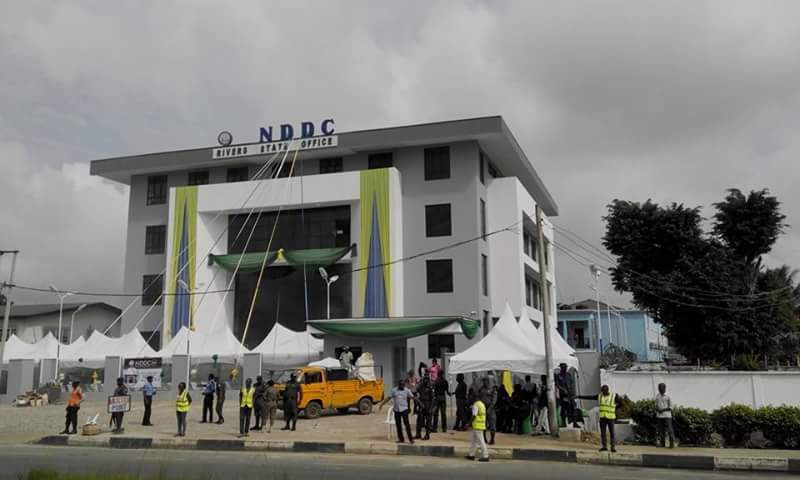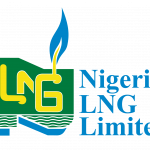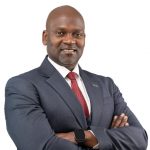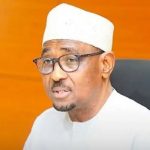Feature/OPED
Evolution of Citizens Quest for Truth Initiative
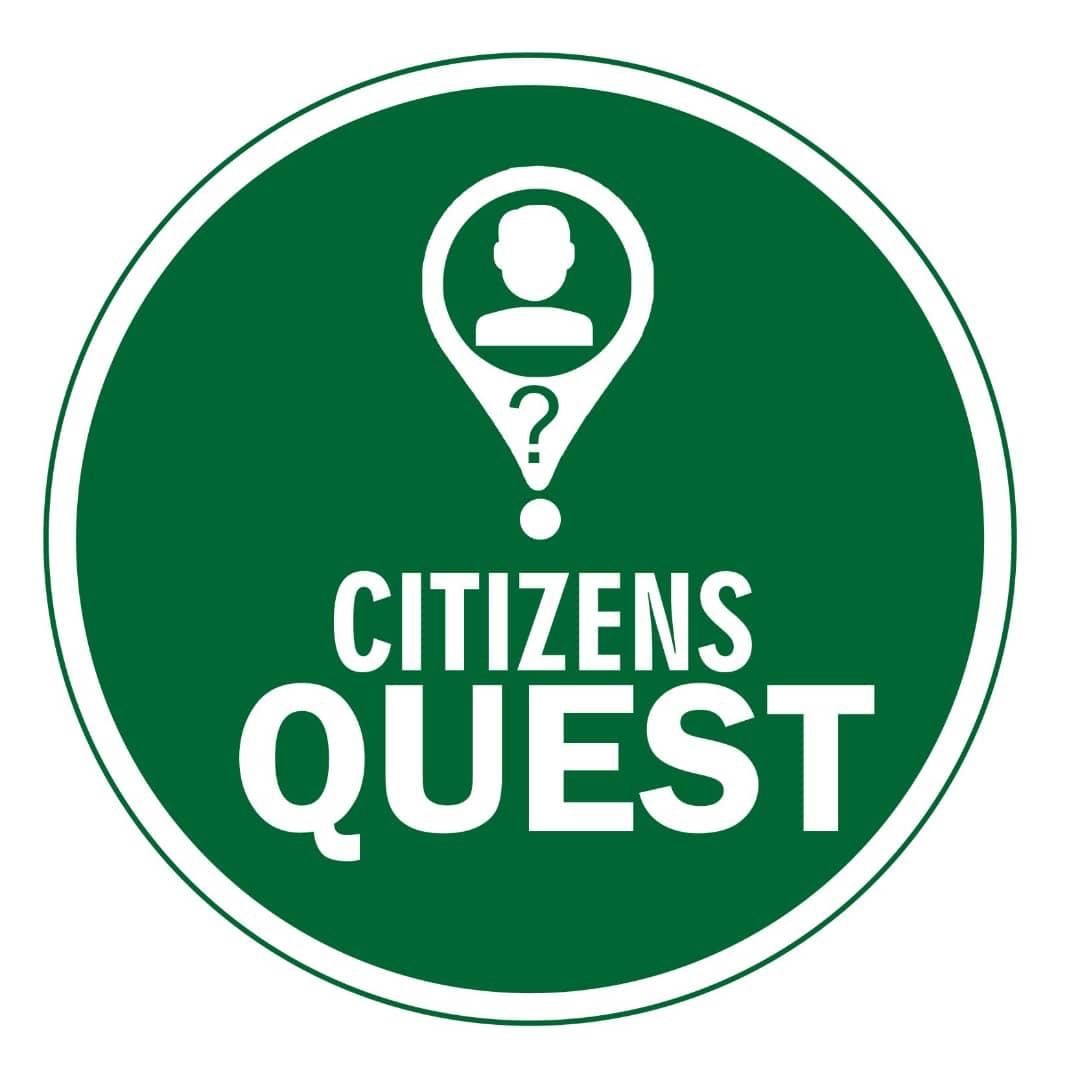
By Atonyesia Dimieari-Peterside
When, in 2019, a non-governmental and non-profit organization, Citizens Quest for Truth Initiative, came on stream, not a few persons consigned her future to the dustbin.
One of the reasons stemmed from the fact that people knew next to nothing about the vision and mission of the NGO. Another being that, to most of such initiatives, political colouration won’t allow them to stand the test of time.
This latter group of persons, therefore, spared nothing in their avowed commitment in seeing that every step of Citizens Quest in realizing her objectives, was smeared with putrid political innuendos and, sometimes, outright dismissal.
Interestingly, the harder the naysayers entrenched their vitriolic punch, the higher Citizens Quest for Truth Initiative record more success stories. Before long, the NGO has become a household name in the interrogation of all tiers of government policies viz-a-viz their implementation.
As an accountability advocacy group that concerns itself withholding government at all levels accountable for their actions, activities, programmes and policies, Citizens Quest invokes the rights of a citizen to investigate government policies, as they affect the people, and visit project sites for an unbiased assessment.
Founded by Chief Obiaruko Christie Ndukwe, a seasoned journalist and advocate of good governance, Citizens Quest has a National Executive with existing structures and membership across the 9 states of the Niger Delta region.
As a registered Non-governmental Organisation with the Corporate Affairs Commission, some of the aims and objectives of Citizens Quest include, but not limited to raising future productive leaders that will be passionate about transforming society. This is in addition to engendering platforms for the active participation of youths in regional integration and nation-building.
In the course of an interesting interview recently, Chief Christie Obiaruko Ndukwe, revealed some of the propelling motivations for the formation of the NGO.
According to her, “I noticed that it is difficult for anybody to appreciate those in government and it is difficult for those people in government to also see the views of the masses without bias. So, I decided to strike a balance by coming up with the idea. Where the government is doing well, we will support them and encourage them. If there are areas they need to probably make some changes, we also let them know as we speak to the people, who will trust us enough to pour out their hearts to us.”
It is therefore that desire, the commitment to strike a balance that gave rise to the several quests the organisation had embarked upon to bring to the fore the truth concerning project execution by the various tiers of government and their agencies, especially those of the Niger Delta region.
A brief trip into the advocacy journey of Citizens Quest for Truth Initiative, otherwise known as “Search4TheTruth/C4Urself”, might suffice here.
The journey started with a test run wherein projects are done by the Niger Delta Development Commission (NDDC) were highlighted. This opened a Pandora box ranging from abandoned projects, substandard project execution and, most regrettably, frightening cases of outright stealing of funds meant for projects that were never executed.
Besides, on June 30th, 2020, Citizens Quest beamed her investigative searchlight on the long-abandoned Chokocho-Igbodo Road in Etche Local Government Area of Rivers State. The outcome of this quest was, to say the least, appalling. Being a federal road, the group thereafter, made frantic representations to the federal government to come to the aid of the affected communities.
One of the landmark achievements of these advocacies remains the return to the site of various contractors handling the long-abandoned East-West Road project.
It would be recalled that following the spirited interface between Citizens Quest and the Hon. Minister o Niger Delta Affairs, on the one hand, and between Citizens Quest and the contractors handling the project, on the other hand, our dear President Muhammadu Buhari caused funds to be approved and released for the completion of the all-important road. It is heart-warming to state that SETRACO and RCC are working round the clock to ensure quality and timely delivery of the East-West Road project.
In view, therefore, of his commitment to the realisation of this project in record time, it would not be out of place to commend the Minister of Niger Delta Affairs, Senator Godswill Akpabio, for granting the advocacy group listening ears.
The success stories so far recorded by Citizens Quest for Truth Initiative would not have been possible, but for the leadership prowess of the Founder and President of the group, Chief Christie Obiaruko Ndukwe, a woman who tread where others fear to tread on. Like the goldfish that has no hiding place, her unique and innate leadership qualities have, at different times, brought her to the fore to be recognised and celebrated as an Amazon of her time.
Only recently, she defeated two serving First Ladies to emerge DMOMA Award Lady of Excellence in the South East and South-South part of Nigeria. The Award ceremony, which was held Sunday, December 13, 2020, at Azny Theatre Hall, Abacha Road, GRA, Port Harcourt, also saw Citizens Quest for Truth Initiative coasting home with two ornamental awards, first as a Proactive Group of the year, South-South and South-East and again, as Special recognition for speaking for the masses.
With benefits of hindsight, the nomination as WOMAN OF THE YEAR by the African Women Industrialization Award on Chief Christie Obiaruko Ndukwe did not come as a surprise because Citizens Quest for Truth Initiative has, through her various programmes, become a household name in the champion for good leadership, youth advocacy and youth empowerment.
Beyond steering the waters for good governance in the Niger Delta region, Citizens Quest for Truth Initiative has concluded plans to launch out into the deep waters of leadership disequilibrium in other states of the federation. The task may be daunting, but it is achievable.
Feature/OPED
Why Africa Requires Homegrown Trade Finance to Boost Economic Integration
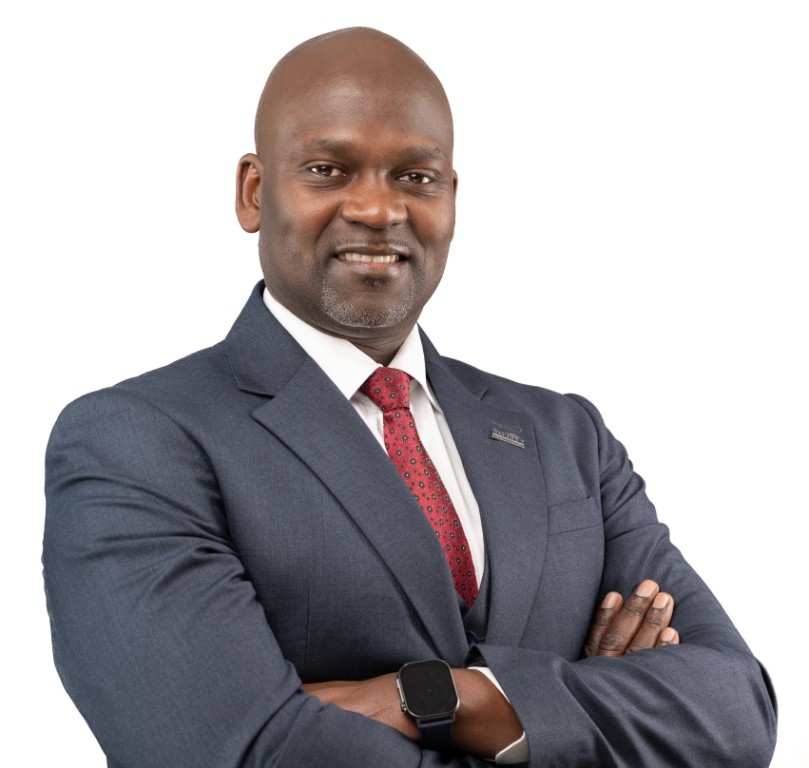
By Cyprian Rono
Africa’s quest to trade with itself has never been more urgent. With the African Continental Free Trade Area (AfCFTA) gaining momentum, governments are working to deepen intra-African commerce. The idea of “One African Market” is no longer aspirational; it is emerging as a strategic pathway for economic growth, job creation, and industrial competitiveness. Yet even as infrastructure and regulatory reforms advance, one fundamental question remains; how will Africa finance its cross-border trade, across markets with diverse currencies, regulations, and standards?
Today, only 15 to 18 percent of Africa’s internal trade happens within the continent, compared to 68 percent in Europe and 59 percent in Asia. Closing this gap is essential if AfCFTA is to deliver prosperity to Africa’s 1.3 billion people.
A major constraint is the continent’s huge trade finance deficit, which exceeds USD 81 billion annually, according to the African Development Bank. Small and medium-sized enterprises (SMEs), which provide more than 80 percent of the continent’s jobs, are the most affected. Many struggle with insufficient collateral, stringent risk profiling and compliance requirements that mirror international banking standards rather than the realities of African business.
To build integrated value chains, exporters and importers must operate within trusted, predictable, and interconnected financial systems. This requires strong pan-African financial institutions with both local knowledge and continental reach.
Homegrown trade finance is therefore indispensable. Pan-African banks combine deep domestic roots with extensive regional reach, making them the most credible engines for financing trade integration. By retaining financial activity within the continent, homegrown lenders reduce exposure to external shocks and keep liquidity circulating locally. They also strengthen existing regional payment infrastructure such as the Pan-African Payment and Settlement System (PAPSS), developed by the Africa Export-Import Bank (Afreximbank) and backed by the African Continental Free Trade Area (AfCFTA) Secretariat, enabling faster, cheaper and seamless cross-border payments across the continent.
Digital transformation amplifies this advantage. Real-time payments, seamless Know-Your-Customer (KYC) verification, automated credit scoring and consistent service delivery across markets are essential for intra-African trade. Institutions such as Ecobank, operating in 34 African countries with integrated core banking systems, demonstrate how such digital ecosystems can enable continent-wide commerce.
Platforms such as Ecobank’s Omni, Rapidtransfer and RapidCollect, together with digital account-opening services, make it much easier for traders to operate across borders. Rapidtransfer enables instant, secure payments across Ecobank’s 34-country network, reducing delays in regional trade, while RapidCollect gives cross-border enterprises the ability to receive payments from multiple African countries into a single account with real-time confirmation and automated reconciliation. Together, these solutions create an integrated digital ecosystem that lowers friction, accelerates payments, and strengthens intra-African commerce.
Trust, however, remains a significant barrier. Cross-border commerce depends on the confidence that partners will honour contracts, deliver goods as promised, pay on time, and present authentic documentation. Traders often lack reliable information on potential partners, operate under different regulatory regimes, and exchange documents that are difficult to verify across borders. This heightens the risk of fraud, non-payment, and contractual disputes, discouraging businesss from expanding beyond familiar markets.
Technology is closing this trust gap. Artificial Intelligence enables lenders to assess risk using alternative data for SMEs without formal credit histories. Distributed ledger tools make shipping documents, certificates of origin, and inspection reports tamper-proof. In addition, supply-chain visibility platforms enable real-time tracking of goods and cross-border digital KYC ensures that both buyers and sellers are verified before any transaction occurs.
Ecobank’s Single Trade Hub embodies this trust infrastructure by offering a secure digital marketplace where buyers and sellers can trade with confidence, even in markets where no prior relationships exist. The platform’s Trade Intelligence suite provides customers instant access to market data from customs information and product classification tools across 133 countries.
Through its unique features such as the classification of best import/export markets, over 25,000 market and industry reports, customs duty calculators, and local and universal customs classification codes, businesses can accurately assess market opportunities, anticipate trends, reduce compliance risks, and optimise supply chains, ultimately helping them compete and grow in regional and global markets.
SMEs need more than financing. Many operate in cash-heavy cycles where suppliers and logistics providers require upfront payment. Lenders can support these businesses with advisory services, business intelligence, compliance guidance, and platforms for secure partner verification, contract negotiation, and secure settlement of payments. Trade fairs, industry forums, and partnerships with chambers of commerce further build the trust networks needed for cross-border trade.
Ultimately, Africa’s path toward meaningful trade integration begins with financial integration. AfCFTA’s promise will only be realised when enterprises can trade with confidence, knowing that payments will be honoured, partners verified, and disputes resolved. This requires collaboration between banks, regulators, and trade institutions, alongside harmonised financial regulations, interoperable payment systems, and continent-wide verification networks.
Africa can no longer rely on external actors to finance its trade. Its economic transformation depends on strong, trusted, and digitally enabled African financial institutions that understand Africa’s unique risks and opportunities. By building an African-led trade finance ecosystem, the continent can unlock liquidity, reduce dependence on external currencies, empower SMEs, and retain more value locally. Africa’s trade revolution will accelerate when its financing is driven by African institutions, African systems, and African ambition.
Cyprian Rono is the Director of Corporate and Investment Banking for Kenya and EAC at Ecobank Kenya
Feature/OPED
Tax Reform or Financial Exclusion? The Trouble with Mandatory TINs
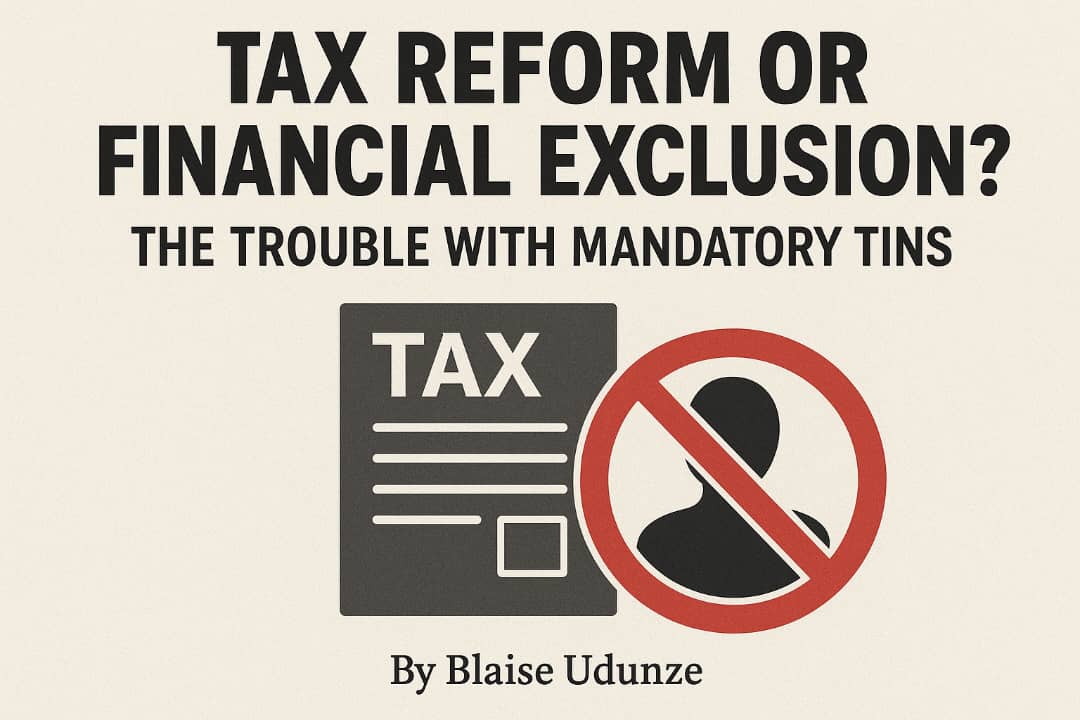
By Blaise Udunze
It is not only questionable but an aberration that a nation where over 38million Nigerians remain financially excluded, where trust in institutions is fragile, and where citizens are pressured under the weight of rising living costs, the use of Tax Identification Number (TIN) has been specified as the only option for their bank accounts operation from January 1, 2026 by the Federal Government of Nigeria.
In practice, the policy spearheaded by Taiwo Oyedele, Chairman of the Presidential Committee on Fiscal Policy and Tax Reforms, is rooted in the Nigerian Tax Administration Act (NTAA), and the intention can be understood in the areas of improving tax compliance, widening the tax net, and formalizing economic activities. But in practice, the directive risks becoming yet another well-meaning reform that punishes the wrong people, disrupts financial inclusiveness, and potentially destabilises an already stressed economy.
Yes, Nigeria needs tax reforms. Yes, the country must broaden its tax base. And yes, public revenues must increase to address fiscal pressures.
But compelling citizens to obtain TINs as a condition for operating bank accounts is the wrong tool for the right objective.
Below are five core arguments against the directive, and sustainable alternatives that actually strengthen tax compliance without endangering banking access or punishing informal earners.
The Directive Risks Deepening Financial Exclusion
Nigeria still struggles with financial inclusion. According to several official assessments, over 38 million adults remain outside the formal financial system. Many of them operate small, irregular businesses, survive through subsistence earnings, or depend on cash-based livelihoods.
The Federal Government’s compulsory TIN-for-bank-accounts policy is built on the assumption that every banked Nigerian is structured, organised, and tax-ready. This is false.
For instance, the rural market woman with N30,000 in rotating savings, the okada rider who deposits cash once a week, the petty trader using a mobile POS agent account, the retiring pensioner managing a small monthly income, and the migrant worker sends small remittances to their family. These are not tax evaders; they are survivalists.
Most operate bank accounts not because they run formal businesses, but because those accounts are essential to modern financial life: receiving transfers, accessing loans, participating in digital commerce, saving against emergencies, and avoiding the risks of moving cash in insecure environments.
By creating an additional bureaucratic barrier, the directive risks pushing millions back into a cash-dominant shadow economy, precisely the opposite outcome of what Nigeria’s financial-sector reforms are trying to achieve.
Bank Accounts Are Not Proof of Taxable Income
The NTAA clarifies that the TIN requirement applies only to taxable persons, individuals engaged in trade, employment, or income-generating activities.
But herein lies the problem: banks cannot determine who is “taxable” and who is not. Banks only see deposits and withdrawals. They do not audit the source or consistency of income. They are not tax authorities.
A student may run a small online clothing resale gig. A retiree may occasionally rent out farmland.
A dependent may receive cash support from a relative abroad. A job seeker may get intermittent gifts from family.
Who decides which of these scenarios qualifies as taxable? Banks? FIRS? Or will citizens be expected to self-declare under threat of account restrictions?
The result will be confusion, over-compliance, and mass panic with banks indiscriminately demanding TINs from everyone to avoid regulatory penalties.
This not only contradicts the spirit of the law but also exposes ordinary Nigerians to harassment and arbitrary compliance requirements.
The Policy Could Trigger Disruption, Panic Withdrawals, and Cash Hoarding
Whenever Nigerians perceive threats to their access to funds, the natural reaction is withdrawal and hoarding. We saw it during:
– the 2023 Naira redesign crisis,
– the 2016 TSA-bank consolidation tightening, and multiple periods of financial instability.
Telling citizens that bank accounts may face “operational restrictions” if they do not obtain a TIN creates a predictable behavioural response: people will rush to withdraw money.
This would be disastrous for a banking system already pressured by:
– high interest rates,
– inflation eroding deposits,
– rising loan defaults, and
– declining public trust.
Any government policy that unintentionally creates an incentive for citizens to flee the formal banking system is counterproductive.
The TIN Requirement Will Become a Bureaucratic Nightmare
Even if millions of Nigerians want to comply, the system is not ready. Nigeria’s administrative infrastructure does not have the capacity to process tens of millions of TIN registrations within months without:
– long queues,
– delays,
– data mismatches,
– duplicate records, and
– systemic errors.
The National Identity Number (NIN)-SIM registration experience is a painful reminder of what happens when ambitious policy meets weak execution capacity.
– Citizens spent months in overcrowded enrolment centres.
– Millions were blocked from services.
– Data inconsistencies persisted.
– The economy suffered productivity losses.
If Nigeria could not seamlessly synchronise NIN and SIM data, how will it synchronise NIN, BVN, and TIN at a national scale without dislocation?
Forcing TIN Adoption Ignores the Real Problem: Nigeria’s Broken Tax Culture
The Federal Government’s real challenge is not that citizens lack TINs, but that they lack trust in how taxes are used.
A government cannot widen the tax net when:
– tax leakages remain widespread,
– citizens feel services do not match taxation,
– corruption perceptions are high,
– government spending lacks transparency, and
– taxpayers do not feel seen, heard, or valued.
Coercion does not build a tax culture. Engagement does. Policy does not create legitimacy. Accountability does.
If the Federal Government wants Nigerians to freely participate in the tax system, it must earn legitimacy first, not mandate compliance through financial restrictions.
What the Government Should Do Instead: A Smarter Path to Tax Reform
Instead of enforcing a policy that may backfire economically and socially, the Federal Government can adopt four smarter, people-centred alternatives.
– Automatic TIN Issuance Linked to NIN and BVN
Rather than forcing Nigerians to apply manually, the government should:
- auto-generate TINs for all existing BVN/NIN holders,
- send the TINs via SMS, email, and bank alerts,
- allow self-activation only when needed for tax obligations.
This eliminates queues, delays, and confusion.
– Build a Voluntary Tax Compliance Culture Through Transparency and Incentives
Tax morale improves when citizens see value. Government should:
- publish annual audited reports of tax revenue use,
- incentivise compliant taxpayers with benefits (priority access to government grants, credit scoring, etc.),
- simplify tax filings for small businesses.
People comply more when they feel respected, not coerced.
– Target High-Value Tax Evaders, Not Low-Income Account Holders
Nigeria’s real tax leakages come from:
- large corporations shifting profits,
- politically exposed persons,
- illicit financial flows,
- multinational tax avoidance strategies,
- the informal “big money” class operating outside the banking system.
Instead of threatening small depositors, the government should strengthen:
- FIRS intelligence and investigation units,
- inter-agency data integration (CAC, Customs, Immigration),
- beneficial ownership transparency enforcement.
The fight against tax evasion should focus on those hiding billions, not those depositing thousands.
– Strengthen Digital Tax Platforms for Easy Self-Registration and Compliance
If tax registration becomes as easy as opening a social media account, compliance will rise naturally. The government should build:
- a mobile-first tax app,
- simplified online TIN retrieval,
- one-click tax filing for gig workers and small traders.
Digital convenience can achieve what regulatory coercion cannot.
Reform Should Not Punish the Public
No doubt, tax reforms are needed urgently, but they must come with a human face, an intelligent, equitable, and aligned with the realities of ordinary Nigerians.
The TIN-for-bank-accounts policy, while well-intentioned, risks undermining financial inclusion, triggering economic instability, and imposing unnecessary burdens on millions who are not tax evaders but survival-based earners.
Good tax policy is built on trust, not fear. On transparency, not threats. On civic legitimacy, not administrative compulsion.
If the Federal Government truly wants to modernise Nigeria’s tax system, it must focus not on restricting citizens’ access to their own money, but on:
- repairing tax trust,
- digitising compliance,
- targeting the real evaders, and
- making participation easier, not harder.
Financial inclusion took Nigeria decades to build. We cannot afford a policy that carelessly reverses these gains.
A better tax system is possible, but it must start with the people, not with their bank accounts.
Blaise, a journalist and PR professional, writes from Lagos, can be reached via: [email protected]
Feature/OPED
Dangote and Farouk: The Distance Between Capital and Conscience
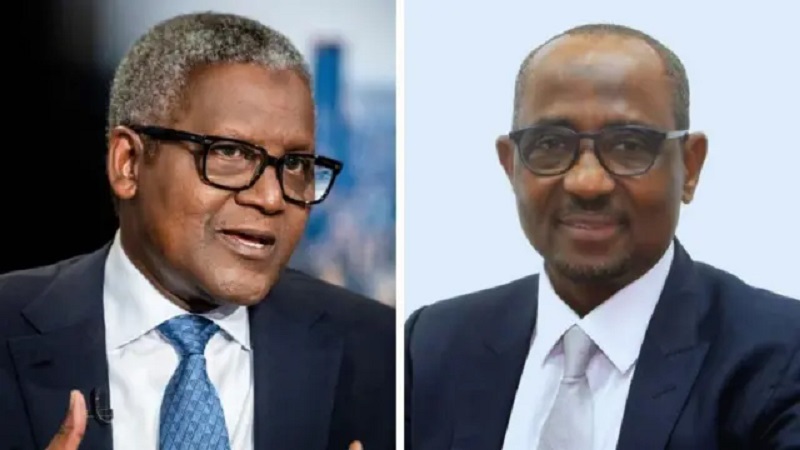
By Abiodun Alade
Within the space of 48 hours, Aliko Dangote offered Nigeria a rare demonstration of what leadership looks like when power is exercised with responsibility and consequence.
First came the announcement of a N100 billion annual education support programme — a decade-long N1 trillion commitment projected to keep more than 1.3 million Nigerian children in school. Its architecture was intentional, not ornamental: girls’ education, STEM disciplines, technical skills, and those children most likely to disappear quietly into the margins of poverty were placed at the centre, not the footnotes.
Then, almost immediately, his refinery reduced the price of Premium Motor Spirit by over N100 per litre. This was not achieved through government fiat, subsidy or public funds, but through internal cost absorption, aimed at easing the pressure of inflation on households, transport operators and small businesses already stretched thin.
Two decisive interventions. One individual. Forty-eight hours.
In a country where scarcity has been normalised and excuses institutionalised; these actions stand out precisely because they are uncommon. Nigeria does not lack wealth. It lacks the nerve to use it responsibly.
Dangote’s interventions were not symbolic gestures designed for applause. They were structural acts. Education secures the future. Affordable energy steadies the present. Together, they form the foundation of any serious development strategy.
Now set this against the performance of Nigeria’s downstream petroleum regulation.
Engr Farouk Ahmed, Chief Executive of the Nigerian Midstream and Downstream Petroleum Regulatory Authority (NMDPRA), presides over a sector whose policy objectives are clearly stated: support domestic refining, reduce imports, conserve foreign exchange and strengthen energy security. These goals are enshrined in the Petroleum Industry Act and reinforced by the Federal Government’s Nigeria First policy.
Yet in practice, the downstream market remains crowded with import licences, uneven enforcement and regulatory decisions that continue to weaken local refining. Even with Africa’s largest refinery operating on Nigerian soil, import dependence persists — not because capacity is lacking, but because incentives remain misaligned.
This is where comparison ends.
Dangote and Farouk Ahmed do not operate on the same economic or moral plane. One commits private capital to solve national problems. The other leads a public institution whose outcomes are increasingly questioned by industry players, economists and the public alike.
One expands supply.
The other presides over a system where scarcity recurs.
One cuts prices.
The other manages a framework in which price instability has become familiar.
One reinvests personal wealth into Nigerian children.
The other reportedly expends questionable millions of dollars on secondary education abroad, while in his home state, Sokoto, thousands of children drop out of school over tuition fees as low as N10,000.
Only in Nigeria does the arithmetic of public life so often defy reason. Where official incomes are modest, lifestyles sometimes appear imperial. Where the books are thin, the living is lavish. And where questions should naturally arise, silence frequently answers instead.
It is a country where some who labour in the open marketplace live with studied moderation, while others, known only to the payroll of the state, move with a splendour their salaries cannot reasonably sustain. Children are educated across distant borders, fees quoted in foreign currencies that mock the modest figures attached to public service, yet accountability remains elusive.
When regulators falter, it is rarely for lack of laws or mandates. More often, authority is softened by comfort, dulled by compromise, and entangled in interests it was meant to police. A regulator burdened by unanswered questions cannot stand upright; oversight weakens when conscience is clouded.
In such moments, one does not need a forensic accountant to sense disorder. A soothsayer is hardly required to see where lines have blurred, where vigilance has yielded to indulgence, and where public trust has quietly been mortgaged.
This is how institutions lose their moral centre — not always through spectacular scandal, but through a series of small indulgences that mature, unnoticed, into systemic decay.
The fuel price reduction alone deserves careful attention. In Nigeria, petrol is not merely a commodity; it is the bloodstream of the economy. When prices rise, transport fares rise. Food prices rise. School attendance drops. Small businesses shut early. Families cancel travel or risk storing petrol in jerry cans — turning highways into mobile fire hazards during festive seasons.
By reducing PMS prices by over N100 per litre, the Dangote Refinery accomplished what years of policy meetings failed to deliver. It restored breathing space. It returned dignity to commuters. It reduced pressure on traders. It saved millions of productive man-hours otherwise lost to queues, panic buying and logistical paralysis.
That this occurred alongside a historic education commitment is not accidental. It reflects an understanding that energy without education builds nothing, and education without economic stability cannot thrive.
Meanwhile, regulatory bottlenecks remain. Local refiners cite delays in approvals, vessel clearances and inconsistent enforcement. Importers continue to flourish. Arbitrage adapts. Rent-seeking survives. The system continues to reward trading over production.
This is not accidental. Systems behave exactly as they are designed to behave.
Nigeria does not suffer from a shortage of ideas. It suffers from a shortage of alignment. When private citizens act more decisively in the national interest than institutions legally mandated to do so, something fundamental is broken.
No country industrialises by frustrating its producers. No economy grows by privileging imports over domestic value creation. No regulator earns legitimacy by operating in tension with stated national objectives.
Dangote’s actions within 48 hours expose an uncomfortable truth: Nigeria’s most binding constraint is no longer capital, technology or scale. It is governance culture.
Leadership is revealed not by speeches, but by choices. In two days, one Nigerian chose to educate the future and ease the present. Others continue to curate systems that profit from delay, opacity and dependence.
History is rarely neutral.
It remembers who built.
And it remembers who stood in the way.
Abiodun, a communications specialist, writes from Lagos
-

 Feature/OPED6 years ago
Feature/OPED6 years agoDavos was Different this year
-
Travel/Tourism9 years ago
Lagos Seals Western Lodge Hotel In Ikorodu
-

 Showbiz3 years ago
Showbiz3 years agoEstranged Lover Releases Videos of Empress Njamah Bathing
-

 Banking7 years ago
Banking7 years agoSort Codes of GTBank Branches in Nigeria
-

 Economy3 years ago
Economy3 years agoSubsidy Removal: CNG at N130 Per Litre Cheaper Than Petrol—IPMAN
-

 Banking3 years ago
Banking3 years agoFirst Bank Announces Planned Downtime
-

 Banking3 years ago
Banking3 years agoSort Codes of UBA Branches in Nigeria
-

 Sports3 years ago
Sports3 years agoHighest Paid Nigerian Footballer – How Much Do Nigerian Footballers Earn





